Geofencing
A geofence is “A virtual boundary around a real-world geographic area. The use of a geofence is called geofencing, and one example of use involves a location-aware device such as a smartphone user entering or exiting a geofence, triggering an alert to the device’s user.”
In marketing terms, the most common use of geofencing is for location-based marketing and other location experiences such as curbside pickup (click & collect), app gamification and more. Mobile apps can use RFID, Wi-Fi, GPS or cellular data to trigger targeted marketing actions such as messages, ads and app notifications when a mobile user enters or exits a specific geofenced area.
An example of geofencing is when a mobile user walks past their local coffee shop and receives an app notification that says, “Get 50% off today!”. Or a business might set up a geofence around a competitor to lure their customers away with a better deal.
Not only does geofencing make it possible to send hyper-local notifications to mobile app users based on their real-time location, but it also makes a wealth of valuable location data available. Marketers can gather valuable insights about their app users behaviour, surroundings and context which can help them build and adapt their marketing campaigns.
It’s worth noting, the term ‘geo fencing’ refers to the same technology, so we’ll use both in this guide.
What is the purpose of geofencing?
The purpose of geofencing is to make it possible for businesses and companies with apps to accurately track their users, market to them or alert them when a mobile devices enters or leave a certain location. The technology can be enhanced greatly with the use of Bluetooth beacons which are focussed on transmitting targeted messages to nearby mobile devices.
Geo fencing is focussed on building virtual ‘fences’ around specific geographical location to deliver targeted messaging. While beacon technology can also be used to trigger apps to perform any action the owner has assigned to it.
These tools open up many opportunities for advertisers, resulting in more relevant personalized messaging, increased engagement and a better return on investment.
A geo fence can be as big as a city or as small as a building. They can even take different shapes. For simple cases they can be round, or for more complex cases marketers can build polygon-shaped geofences.
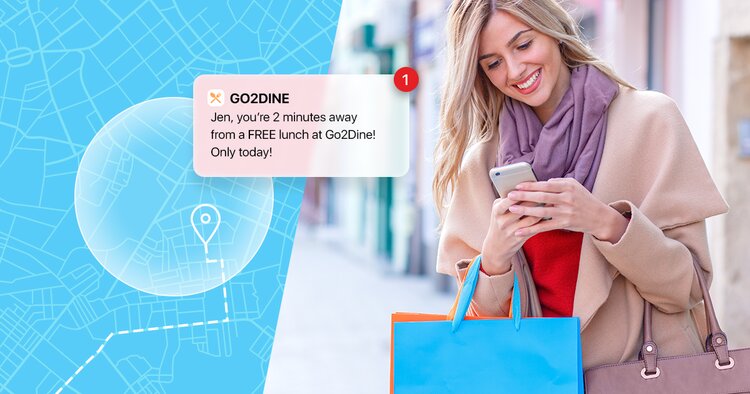
Geofencing companies – how to choose one
The best geofencing companies offer scalable solutions with high accuracy and low battery use (not reliant on GPS). Along with easy implementation, an easy-to-use dashboard and helpful analytics making it easy for marketers to create, manage and optimize their campaigns.
Hailed as one of the best geofencing companies out there, PlotProjects offers all the tools you need to build accurate and efficient location functionalities into your app. You can find out more about our geofencing SDK, APIs and dashboard in our guide.
Try our free trial with PlotProjects or try our demo app and experience how it works right away.
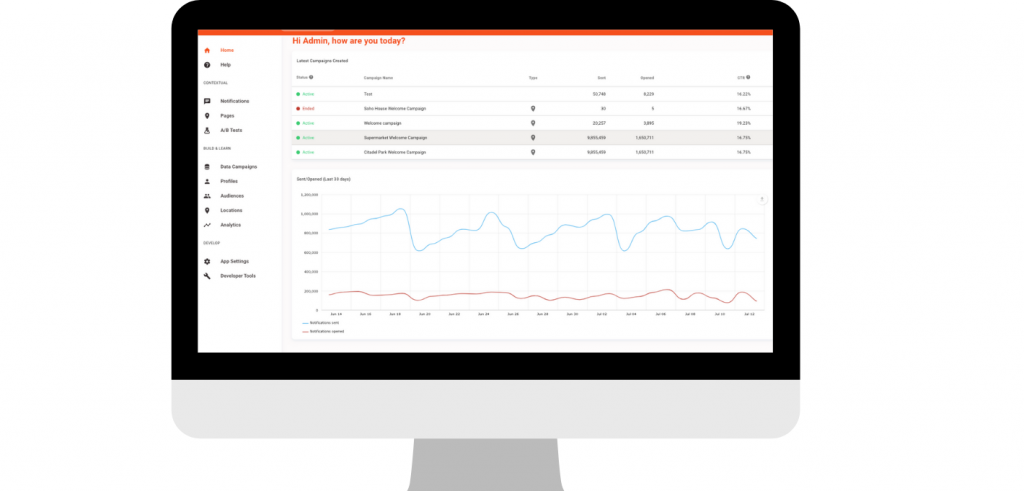
Statistics & data
Below are some interesting statistics and data about geo fencing in 2022.
- Geofencing is compatible with 92% of smartphones.
- Mobile ads with geofencing have double the click-through rate.
- 53% of shoppers visited a retailer after receiving a location-based notification
- 90% of mobile messages are read with 3 minutes
What is an example of geofencing?
There are many different types of geofencing. Here are some examples of how marketers in various industries already get creative with it.
- Retail: Sending promotional messages as shoppers pass by a store to drive visits.
- Automotive: Retargeting users that have visited a car dealership (yours or competitor’s).
- Coupons: Proving the ROI of coupons using location data to track store visits initiated by coupons.
- Airline: Upselling flyers with fast-track services as they walk in the airport.
- Mobile payments: Reminding users of places where they can pay as they visit them.
- Hospitality: Capturing feedback shortly after visitors step out of the hotel.
- Travel: Enriching user profiles with travelling history to supercharge future targeting.
- Dining reviews: Suggesting a list of popular dishes to a guest who visits a particular restaurant.
- Coffee chain: Giving discounts to returning customers to build loyalty.
- Online store: Geo-conquesting competitors locations with deals to lure customers away.
- Home automation: When a smartphone user leaves a geofenced home, the thermostat lowers.
- Human resources: An employee’s smart card triggers an alert when the arrive and leave.
- Fleet & asset management: Geo fencing can be used to track vehicle location.
- Geofencing in cars: This is a thing, too. It’s often used for security and tracking.
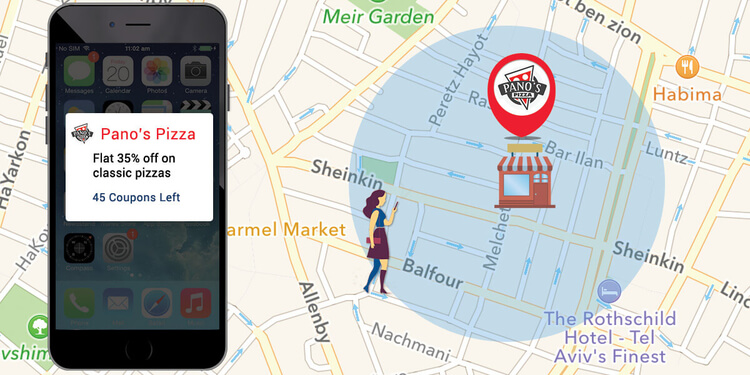
Benefits of geofencing
There are so many benefits of geofencing, it’s no wonder that marketers around the world are using it. Here are some of the main benefits:
Geofencing marketing
Imagine being able to target your apps users at exactly the right time and place. And engage them with highly-relevant personalized messaging. With geo fencing you can do just that. By sending location-relevant content to mobile users based on their current or recently-visited location, you can drive their engagement with your app.
Better location data
By implementing geofencing in your app, you’ll enjoy access to a wealth of location insights about consumer behaviour. Collect location data about user’s offline behaviors for audience segmentation, personalization, retargeting, competitive intelligence, and online-to-offline (O2O) attribution. This data can be used to build and refine your campaigns, increase engagement and better under users behaviour.
Increased conversion rate & ROI
When your marketing and advertising is hyper-targeted in this way, you’ll enjoy better results and a better return on your marketing spend. By engaging your prospects at exactly the right moment – when they are out shopping near their favorite stores – you’ll be targeting the right prospects – those who are already close to the point of purchase. And not wasting your spend on those who are not.
Reach mobile users in a variety of ways
Geofences can trigger a variety of interactions, from push notifications to in-app content, ads and emails. Even if a user hasn’t opted in for notifications, geo fences can still trigger relevant content to appear in your app at specific locations.
Add value across your entire campaign
Geo fencing can provide context to your analytics and cross-channel campaigns. From display, to web and email, it can help you better understand performance. What’s more, it can be easily combined with Bluetooth beacons for more granular targeting.
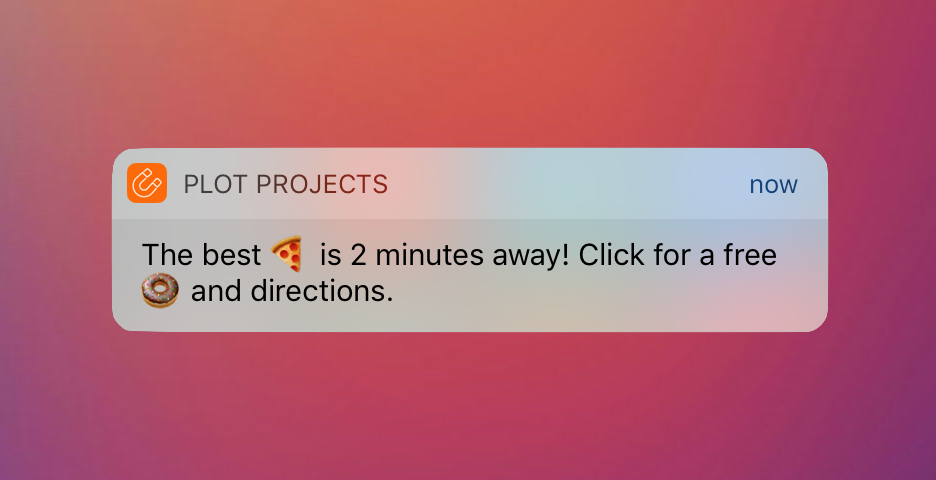
How is geofencing used by marketers?
Let’s take a look at some of the most common ways that location technology is used by marketers:
- Brand apps: So many brands have their own app. A geofencing plugin can be easily added to an app to enable marketers to send notifications when an app user enters or exits a geofenced area.
- Web ads: Location-based ads can be served on search engines such as Google when users cross a physical boundary.
- Text messages: Text messages can be sent to mobile users when they trigger a defined area.
- Third party apps: Many brands utilize third party apps such as coupon apps to send their users location-based notifications.
- Social media ads: Social media ads can be served to consumers who cross a geofence.
Does geofencing marketing really work?
Yes, geofencing marketing really works. Businesses can target consumers near shops, at airports, at trade shows, colleges, special events and more, all from their smartphone device. Many studies have shown that that geofencing notifications and alerts are effective, leading to higher engagement, more footfall in-store and increased sales.
Types of geo fencing
The general functioning of geo fencing is that it uses location services to detect a user’s device within the predefined zone – the geofence – in order to trigger a notification or track visits. Now, which location services are used to do this can vary depending on the provider. It can use:
- Cellular
- Wifi
- GPS
While Cellular and WiFi are recommended for their reliability, GPS-based solutions are not. They are accurate, but this technology has proven to be extremely battery-draining (remember those times you used Google maps to get somewhere and ended up with a half dead phone? Yeah, so do we). If you’re looking for a geofencing provider, check out this list of most important features a provider should have.
It is important to note that your app users will have to opt in for location services in your app for geofencing to work. Similarly, your users can later opt out. Read our blog on convincing users to opt in if you want to know how to make sure as many users as possible give your app permission.
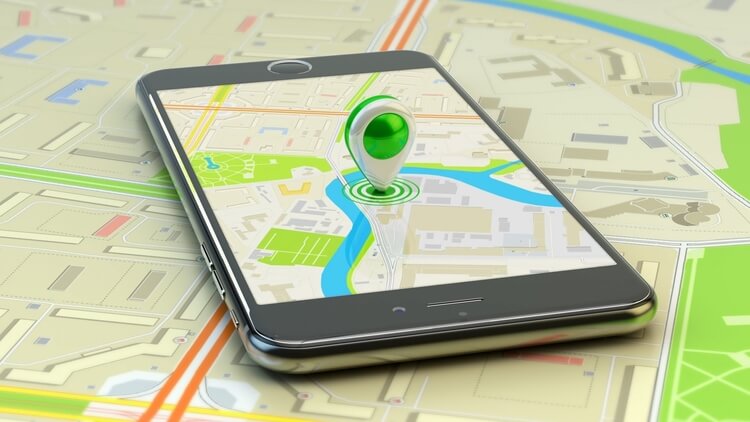
What is WiFi geofencing?
WiFi geofencing is a type known as ‘passive’ geo fencing. For instance, active geofencing is when an app is open on a shopper’s mobile phone, actively using GPS – a big drain on battery life. whereas passive uses WiFi and cellular data, and work sin the background, not relying on GPS.
Geo fencing, beacons and geotargeting compared
Geo fencing, geotargeting and beacons are all used for location based marketing. Different providers choose to rely on either one or several of these technologies. However, the difference lies in the way they generate location data and their target range. The table below addresses the differences between the technologies and highlights how they are best used.
| Geotargeting | Beacons | Geofencing | |
| Location Technology | IP-address | Bluetooth | Cellular/Wifi |
| Target Range | Large (state, zip code) | Small (store aisle, bus stop) | Medium to large (store, neighborhood) |
| Real-Time Targeting | No | Yes | Yes |
| Best For | Browser marketing | Mobile & app marketing | Mobile & app marketing |
| Location Data Collection | No | Yes | Yes |
| Hardware and Maintenance | No | Yes | No |
Privacy concerns
Geofencing relies on location services which naturally brings up customers’ concerns about companies accessing their location data. So here are a few things to guide you in this area:
- The power is always with the customer. Geo fencing requires customer’ permission to share their location data. Customer can easily revoke this permission at any time.
- The key is being transparent. You need to explain to your customers why you need to access their location. They will be more willing to support you if they know why you are using their information.
- The rationale behind you accessing and using your customer’s location and mobile phone data is important: it must benefit the customer experience, not just you.
- Provide security to keep customer data safe.
- As an app, you need to have a privacy policy that communicates all the assurances you deliver to your customers. It needs to be clearly documented and available online.
- When communicating with your customers about location sharing, your choice of words is crucial, it can allay their concerns away or scare them away!



